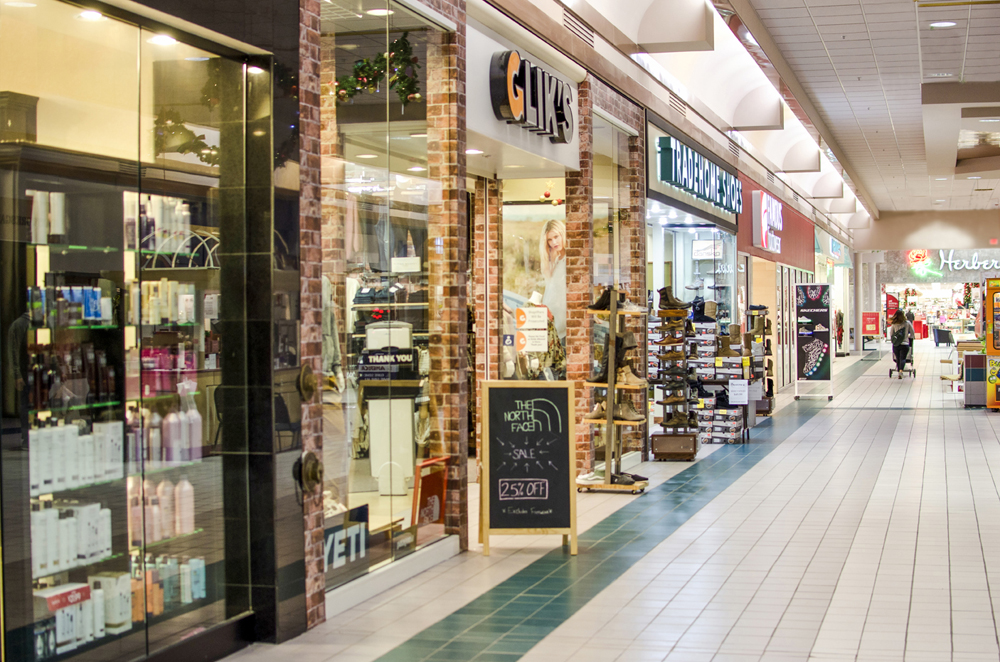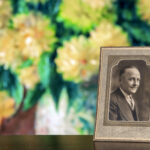

As we enter a new decade, Aberdeen residents weigh in on our city’s strengths, weakness, and hopes for the future.
When asked what the biggest difference in Aberdeen is since 2010, Sheila Richards, chair of the Aberdeen Area Diversity Coalition, told a story:
“One day last summer, I was shopping at Walmart. As a person with limited mobility, I really appreciate the electric carts. I had stopped in the yogurt aisle but was unable to spot what I wanted. A young, nimble Asian woman came to me, “Can I help you?” I explained what I wanted. She climbed, yes she did, up onto the shelves but alas could not find “my” yogurt. Later, tooling along in broccoli and fresh green beans, I felt a tap on my shoulder. It was my new friend, smiling, holding three containers of the yogurt I wanted. “Look, I found it.” A Hispanic family was in front of me at the check-out. Mom, dad, and two cute little kids. Dad asked, “Can I help unpack your cart, put things up on the conveyor belt?” Si, muchas gracias (three of my 100 Spanish vocabulary words). The cashier was a young Somali woman wearing a hijab. I asked for carry-out help. Help arrived—a tall young man with a traditional braid down his back. Now, what was the question?”
The year 2020 won’t get the attention its 20-year-old sibling did. Without the millennial overtones, Y2K.2 is less auspicious, but the year 2000 didn’t really have much on 2020. After all, in 2000, most of us knew nothing about smartphones (the iPhone first appeared in 2007). Fax machines still mattered. YouTube and Facebook were still a few years away. Change is fast.
Aberdeen Magazine surveyed a number of people who are involved in many facets of life in Aberdeen—government, business, education, social service, and more—about their thoughts on the city as we move into the 2020s. They told us what they thought had changed, what they think or hope will change, and what Aberdeen’s strengths and weaknesses are as we enter the new decade. The results were interesting.
Looking back at the past decade, Mike Levsen, mayor for most of that period, ticked off a list of accomplishments, “Ongoing increase of 6,000 additional residents compared to 2004. Over 1,500 added housing units. Every city and NGO public use facility reconstructed, remodeled, upgraded, or with current work in progress, or with plans for change in place. MFG, Demkota, Sanford, AGP, and other service and production employers in place. 3M, Midstates, Avera, ethanol plants, and other existing enterprises expanded.”
Heath Johnson, Dakota Plains Commercial Real Estate, summarized some of the themes that emerged from the survey: “The biggest difference I see in Aberdeen in the last ten years is the large growth in the rental housing market and the changing dynamics of the retail market. We have built lots of new apartments to satisfy the population growth that has been occurring. Retail has changed dramatically from everyone trying to be out on the east side of town, to a better mix of east-side retail and service along with a revitalization of downtown Aberdeen.”
Population changes, business needs, housing, downtown, and other topics were cited frequently by respondents. Starting with the first, City Manager Lynn Lander reported a significant population increase in Aberdeen, “U.S. Census data estimates a population increase of 9.47% to date since 2010.”
Within those numbers, of course, is a literal change in complexion for the city, which Sheila Richards alluded to earlier. Aberdeen has gotten more diverse. U.S. Census estimates for 2017 suggest the white proportion of Aberdeen’s population at 88.8%, down from 92.9% in 2010. The foreign-born population of Aberdeen is estimated at 1,105, about four times the 2010 level, and about 4% of the total population. Interestingly, 100 years ago, the foreign-born population of Aberdonians 21 and over (what the Census measured) was 22% of the total. About 2.4% of today’s Aberdeen population are not U.S. citizens; in 1920, the proportion was almost 10%. For what it’s worth, at least 20% of the foreign-born a century ago were from countries with which the U.S. had just fought a war and would again within a generation.
Yet, despite noted resistance to some new people in the area in recent years, several respondents saw progress. Presentation Sister Kathleen Bierne identified as a change over time, “The awareness that newcomers to our area are here to stay. I think back in 2002-2010, folks thought that it was just a temporary experience. The backlash seems to be receding a bit the last year or so as people realize that newcomers are not only here to stay but needed for our economy.” While some noted a need to address resulting cultural differences, no one identified their presence as a threat.
The survey revealed concern about business, particularly retail—from a perspective of both online competition as well as a lack of choice. Nathan Gellhaus of Angelhaus urged, “I would really like to see a concerted effort to support our local retail marketplace. I understand the convenience of clicking, adding to cart, and unwrapping a delivered package two days later, but if we all spend more locally, that rising financial tide can lift all ships.” Almost directly in response, Aberdeen Housing Authority’s Jody Zueger wants to see “More retailers, so we don’t have to shop online or go outside of Aberdeen.”
Casey Weismantel, director of the Aberdeen Convention and Visitors Bureau, summed it up, “Aberdeen needs to address the retail opportunities that are leaking out of Aberdeen. If people visit, they will shop. If they can’t shop, they might not visit.” Sheila Richards made one blunt assessment: “The mall is becoming a tomb.”
The mall notwithstanding, development on the east side of town was seen positively, but the east side has historically drawn traffic and businesses away from downtown. Our respondents saw downtown as another area of both concern and opportunity—and necessity. Aberdeen Downtown Association Director Shelley Westra–Heier said, “I’d really like to see additional housing opportunities arise in our downtown area. An increase in people living downtown creates support and a continued push toward full storefronts and a wide variety of retail and service-based businesses in downtown Aberdeen.”
andra Welling of Presentation College noted, “I have talked to many who said when they were young, downtown was a ‘thriving, happening place.’ I would love to see our downtown become a ‘happening destination.’”
CO-OP Architecture’s Spencer Sommers thinks the downtown needs “more options that can attract people outside of the usual nine to five weekday. More places to eat, live, and socialize (all within proximity) will help attract and retain residents of Aberdeen by creating a more vibrant downtown ‘destination’ district. Exterior dining options, well-utilized plaza spaces, and a denser pedestrian population all help create the sense of place that is seen in every successful city throughout the U.S.”
City Manager Lander noted, “179 new commercial buildings have been constructed over the last decade. The city valuation has increased by $550 million for the last decade due mostly to new construction.” Heath Johnson added a specific related hope, “With regards to commercial real estate, I believe that the west end of Aberdeen will finally see its long-awaited revitalization. The greatest driver of this will be the lack of space along 6th Avenue that is already occurring. Businesses will need to push west, and in doing so, will allow for the properties out there to be significantly changed.”
Looking at business needs from a different angle, Aberdeen Development Corporation President Michael Bockorny raised “the continued challenge of not having enough workers to fill open positions. This challenge is not going away and maybe never will, so we have to be creative in our approach.” One solution, Council Member Joshua Rife mentioned, is the role Northern State University and Presentation College offer by providing “Aberdeen with a huge opportunity for trained workers to grow and expand our existing workforce as well as promoting an entrepreneurial spirit in Aberdeen.” State Representative Carl Perry noted a local weakness, “We do have ATEC but no higher education for technical, i.e., a Mitchell or Watertown Vo-Tech.”
Several respondents noted housing improvements in Aberdeen in the past decade. Lander reported the city added more than 1,800 housing units since 2010, an increase of 15%. But it’s not a need that goes away. Jody Zueger, director of Aberdeen Housing Authority, says, “I would like to see more affordable housing and have the City of Aberdeen participate in this endeavor instead of leaving it up to nonprofits to handle.”
Melinda Millermon of Northern State University noted another issue that was reported by several respondents: “I would say public transportation is the greatest weakness here. Parents are having to bring their kids to school in the morning and pick them up, which creates congestion near the schools. Ride Line helps with public transportation, but they are only available limited hours, and you have to call so far in advance to schedule a ride.” It’s not just a school issue. Avera Health CEO Todd Forkel noted that there are “more people who cannot get to their healthcare appointments due to lack of transportation.” Not to mention getting to work or shopping.
ADC’s Bockorny adds, “One of our greatest strengths is our infrastructure, which is key in economic development. As long as we stay ahead of the curve in continued development and maintenance of the infrastructure, we will maintain a competitive advantage over other communities in attracting growth opportunities.” Still, some respondents pointed to the need for road improvements.
City Manager Lander noted a couple of alarms somewhat related to infrastructure and other city spending: “Nationally and locally elected officials will be forced to consider the loss of former traditional revenue sources to fund continuing road improvements.” He mentioned, for example, that electric vehicles pay no transportation taxes to help finance needed road improvements. In addition, despite the Supreme Court decision allowing the state to collect sales tax on online sales, “The primary question is will online sales tax revenues truly replace revenues collected by local merchants who also paid local property taxes?”
Addressing these opportunities and threats often involves drawing more people and/or business to Aberdeen, which means promoting the city. Hub City Radio’s Brian Lundquist said he’s been “to many communities our size—some smaller, some bigger—and they ask how does Aberdeen do so well? What’s the secret sauce to Aberdeen’s growth and success?”
Promotion can be an individual thing too. A repatriated Aberdonian, Heath Johnson gave a pretty good endorsement: “I would most like to see more people like me, those who left for a significant period of time, return to Aberdeen to live, work, and raise their families. Aberdeen is a great place to be, and we should all be recruiting our families and friends to give us another look.”
All in all, our respondents see progress and good things ahead for Aberdeen, but not without some diligence and work. The old saying goes, “Good things come to those who wait”—but these folks would include the often overlooked rest of the statement—”but only what’s left from those who hustle.” Echoing that sentiment, the last words here go to Mayor Travis Schaunaman: “I’d like to see more buy-in from the average citizen. Many of us are excited about our community’s direction, but there are still way too many who are either sitting on the sidelines or are vocally disenfranchised. I want everyone here to begin to be the change we want to see.”
Watch for more Version 2020 stories in the future issues of Aberdeen Magazine that will explore some of the subjects mentioned here in greater depth. // — Patrick Gallagher



What are Aberdeen’s strengths?
“Aberdeen’s greatest strength is our community. The most recent example is the Malchow’s fire. The way our community rallied together to support the tenants and the Malchow family almost instantly was amazing. The companies in town that made the transition for the tenants so smooth and the ones that helped support the fire department while they worked tirelessly to put out the fire were some of the most encouraging actions I have ever seen.”
–Alexandra Miller, Journey Home
“Our greatest strength is the spirit of self-determination. We have had so many great businesses start and flourish here. We need to capitalize on our legacy of successful enterprise through connecting people, telling our success stories, and by lowering the hurdles of entrepreneurialism.”
–Mayor Travis Schaunaman
“I think the biggest strength of our community is that it is a big small town,
not a small big town. Aberdeen has always had a “Sometimes you want to go where everybody knows your name” feel to it. It is rare to be in a place that has so much to offer yet still has such a small-town feel.”
–Rodney Johnson, New Life Fellowship Church
What would expect or hope to see happen in the next decade?
“More affordable housing
and keeping landlords
accountable to protect renters.”
–Alexandra Miller, Journey Home
“A large scale community
strategic planning effort.”
–Dani McQuillen, Bureau of Indian Affairs
“Hoping that the Aberdeen
trail system becomes a reality.”
–Tim Weisz, Roncalli Schools
“An event center.”
–Katie Washnok, Blackout, Inc.
“Turning the Mog into a destination (like Falls Park), not a disaster.”
–State Representative Carl Perry
“I would like Aberdeen to proactively make available resources to help those living with dementia and their loved ones. Knowing how to recognize, how to care for, and how to provide support for this pending epidemic speaks to the essence of how a community can unite for a common and worthwhile goal. If we cannot cure it, let’s focus on improving the quality of lives.”
–Nathan Gellhaus, Angelhaus
“I would love to see more options in the winter for parents with small children. The winter is long and painful; any business ventures that would create activities for family fun would be much appreciated.”
–Rodney Johnson, New Life Fellowship Church
“I see Aberdeen as a place where technological advancements can be developed, produced, and put into action on our local farming operations.”
–City Council Member Joshua Rife
“Generations working together to solve problems, rather than just complaining about them. Things won’t change unless you help change them.”
–Tom Wanttie, Aberdeen Ride Line
What are Aberdeen’s weaknesses?
“We do not have good immediate options for people struggling with addictions and mental health issues. People struggling with these issues are sometimes sent to jail for detox, often because the medical facility is at capacity or because they have ‘dealt’ with the person too often. The issue of their addiction is never addressed.”
–Gina Karst, Safe Harbor
“Those who see events and changes as to be feared and opposed rather than managed to our best advantage. Most effective change will be when those people are inevitably replaced by younger, more enlightened and more courageous residents. If not, we are doomed to be older and smaller, rather than larger and more vibrant.”
–Former Mayor Mike Levsen
“I think that Aberdeen is at a crossroads, and it must choose which way to go. And it starts with deciding whether to put up a fight to keep living in a monoculture or, the hardest thing, to lean into discomfort and try imagining a community where more mindsets, life journeys, and approaches can mean more solutions. The sin is the illusion that the achievements are exclusively attributable to their hard work and the perpetuation of a public discourse that continues to marginalize many in our community.”
–Ioana Hojda, Northern State University

















